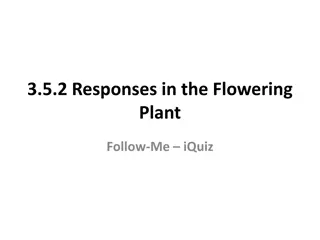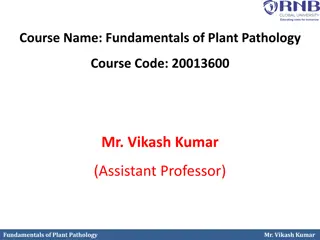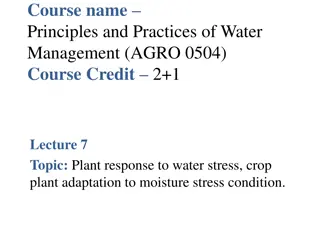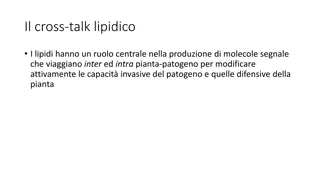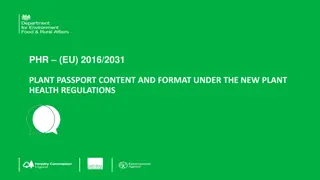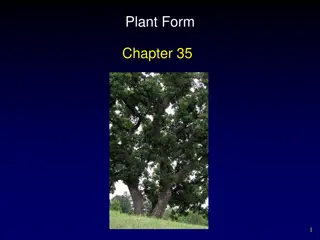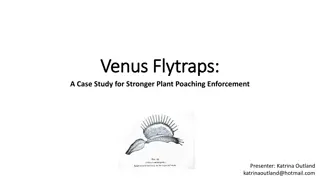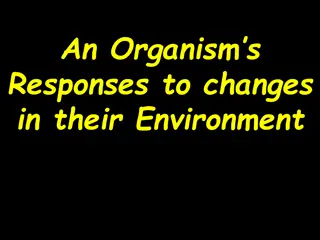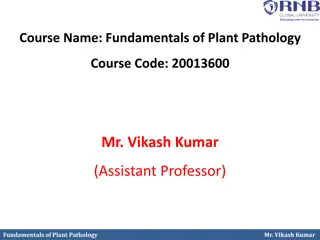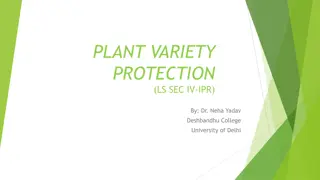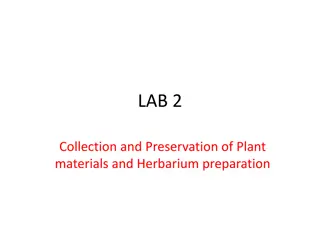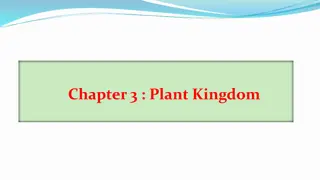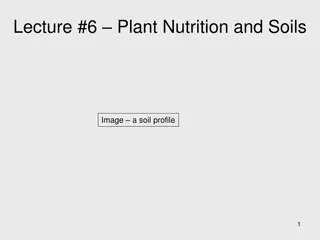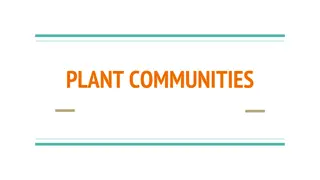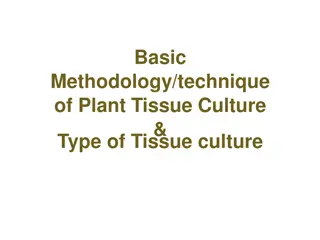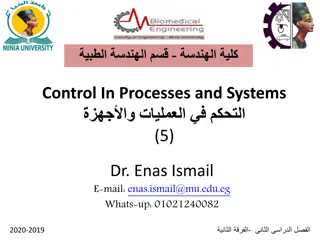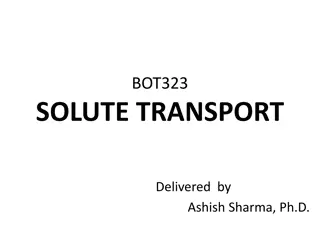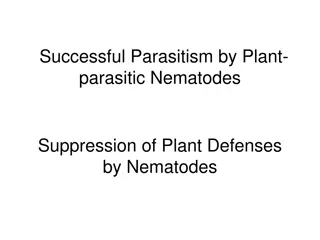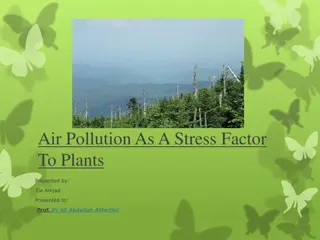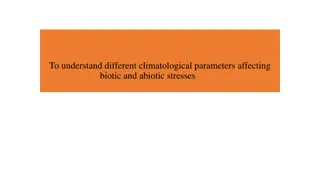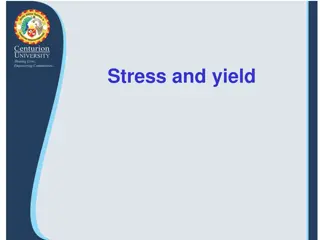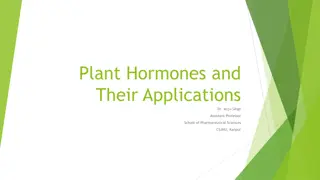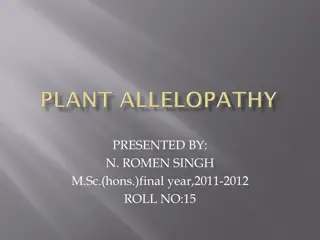Understanding Plant Tropisms and Responses to the Environment
Explore how plants respond to stimuli like light, gravity, and touch through tropisms such as phototropism, gravitropism, and thigmotropism. Discover the factors influencing plant growth and survival, enhancing your knowledge of botany and plant behavior.
Download Presentation

Please find below an Image/Link to download the presentation.
The content on the website is provided AS IS for your information and personal use only. It may not be sold, licensed, or shared on other websites without obtaining consent from the author. Download presentation by click this link. If you encounter any issues during the download, it is possible that the publisher has removed the file from their server.
E N D
Presentation Transcript
Plant Tropisms Today s Goal: I can explain how plants respond to the environment Homework: Complete ALL REVIEW SHEETS AT END OF PACKET Botany Test Tuesday May 12 Warm-up: Hand in graphing activity to Ms. Nagle. Then, in your science journal Turn to page 118. Silently read page 118 and 119 Plant Tropism- Light and Gravity. Stop at Seasonal Responses. Define Tropism.
Plant Responses to the Environment What do you notice about all of the sunflowers in this field?
Plant Tropisms Often, we don t think of plants as being real organisms because they don t think or move around. Growth in response to a stimulus Stimuli that effect plant growth: While they may not move consciously (or very quickly) plants do respond to changes in the environment. Light (phototropism) Gravity (gravitropism) Water (hydrotropism) Positive tropism Negative tropism grows towards stimulus grows away from stimulus
Phototropism http://indianapublicmedia.org/amomentofscience/files/2010/02/phototrophism-940x626.jpg Remember, this all occurs at the cellular level! No brain required!
Gravitropism http://upload.wikimedia.org/wikipedia/commons/thumb/4/4c/Gravitropism_tree.jpg/768px-Gravitropism_tree.jpg Have you ever seen a tree growing out of embankment like this? Why does this happen? Why does this happen?
Thigmotropism Organisms response to contact Remember, this all occurs at the cellular level! No brain required!
Thigmotropism Organisms response to contact Remember, this all occurs at the cellular level! No brain required!
Limiting Factors What do you think is meant by limiting factor ? What gas could be considered a limiting factor for humans but NOT for plants? What are the different things that plants need in order to survive without which their growth would be limited?
TEST REVIEW Today s Goal: I can explain how plants respond to the environment Homework: Botany Test TOMORROW STUDY! Warm-up: Turn to reviews in your packet. Then, in your science journal Explain the difference between vascular seed plants and vascular seedless plants.
Practice Quiz 1) What type of vascular tissue is responsible for transporting water and minerals from the roots to the leaves?
Practice Quiz 2) What do a leaf s stomata allow to enter into a leaf?
Practice Quiz 3) Name an example of a seedless vascular plant:
Practice Quiz 4) What is the chemical formula for glucose?
Practice Quiz 5) On what part of the stamen do the pollen grains form?
Practice Quiz 6) On what part of the pistil must the pollen grains land in order to reach the ovules in the ovary?
Practice Quiz 7) What are the upper and lower cell layers of a leaf called?
Practice Quiz 8) What plant group includes conifers, ginkgoes, cycads and other cone-bearing plants with needles?
Practice Quiz 9) During what process do animals take in oxygen and release CO2 (the exact opposite of photosynthesis)?
Practice Quiz 10) Which part of a flower develops into the fruit once it has been pollinated?
Practice Quiz 1) What type of vascular tissue is responsible for transporting water and minerals from the roots to the leaves? xylem
Practice Quiz 2) What do a leaf s stomata allow to enter into a leaf? CO2
Practice Quiz 3) Name an example of a seedless vascular plant: fern
Practice Quiz 4) What is the chemical formula for glucose? C6H12O6
Practice Quiz 5) On what part of the stamen do the pollen grains form? anther
Practice Quiz 6) On what part of the pistil must the pollen grains land in order to reach the ovules in the ovary? stigma
Practice Quiz 7) What are the upper and lower cell layers of a leaf called? epidermis
Practice Quiz 8) What plant group includes conifers, ginkgoes, cycads and other cone-bearing plants with needles? gymnosperm
Practice Quiz 9) During what process do animals take in oxygen and release CO2 (the exact opposite of photosynthesis)? cellular respiration
Practice Quiz 10) Which part of a flower develops into the fruit once it has been pollinated? ovary








